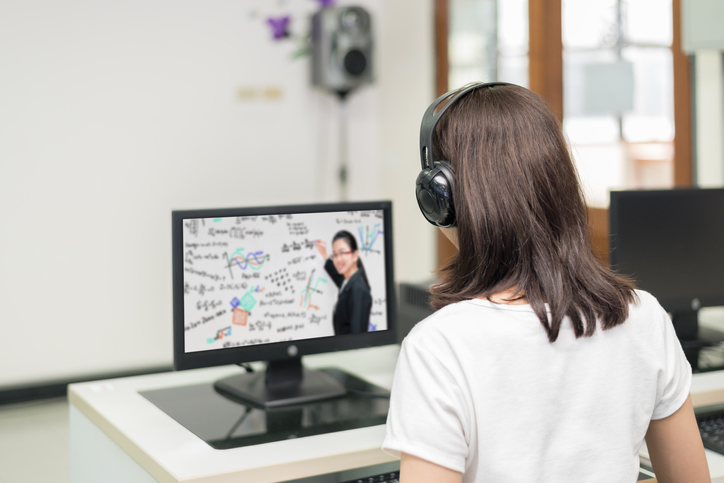Today’s schools face ever-increasing challenges, and we need every piece of technology we can leverage to help. Most states cut funding in wake of the 2008 recession, and almost 60 percent of all states provide less funding per student than they were then.
At the same time, America is facing a teacher shortage that shows no signs of stopping. In 1975, more than one-fifth of college students majored in education, higher than any other major. By 2015, however, that number shrank to fewer than one in 10, according to US Census Bureau statistics compiled by Zippia.
As Jacob Passy says, writing for the New York Post, “Public schools nationwide don’t have enough teachers, according to data from the Department of Education. Forty-eight states and the District of Columbia lacked math teachers, alone. Similar shortages were reported for special education, science, and foreign languages.”
Incorporating video conferencing in K–12 education can make a big difference, especially in areas of the country where it otherwise would be difficult to bring in specialty teachers. With the student-teacher ratio increased by 30 percent over the past three decades, schools are looking to extend the reach of the teachers they have and find new ways to get others involved, no matter where they may be located.
1. More One-on-One Interactions
One of the main ways video conferencing can help improve the teacher and student relationship is by enabling students and teachers to connect individually and personally. Tools like screen sharing and live chat mean teachers can offer more individually-tailored time to help students no matter where they are. A snow day, a serious illness, or absence don’t have to stand in the way of getting caught up with the rest of the class.
This requires a balance in terms of teacher workload, but one or two opportunities each semester for students and teachers to connect as individuals can go a long way towards improving learning outcomes. Students in 2018 are already living in a world where they can tune into their favorite streamer on Twitch or YouTube, so going online for class is just more of the same.
2. Catching Up on Missed Time
Storage and video capture capabilities are improving all the time with classroom technologies, so it’s easier than ever before for teachers to record lessons. Publishing that content makes it a relatively simple process to catch up if you ever miss a class or just want to review for a test. With tools like Jamboard and something as simple as a webcam, you can capture most aspects of a lesson and make it relatively easy to follow what’s happening with minimal effort on the part of the instructor.
3. Access to New Talent
One of the biggest challenges with smaller and more rural school systems is attracting teachers who can cover more specialized topics, particularly in math, science, and technology. For these school districts, “beaming in” a qualified teacher can make up for what they might otherwise lack and offer students a pathway to learn more about these topics.
Offering classes via video conferencing means you can look beyond the usual hiring pool to find a great fit to teach the class, without having to worry about whether or not they are located close enough to the school to make it there in person. This frees you up to consider people who wouldn’t usually be able to fill the position, whether because they’re in another city or because they need to stay at home to take care of a relative or child.
4. Making Demonstrations Even Better
The demonstrations in most classes, whether they’re math, chemistry, or English, are key to understanding the lesson plan—and often the most fun! (Think all those explosions in chemistry class.)
Technology like video conferencing and HD cameras means you can capture demonstrations in high resolution and share them as needed. Looking at a particular reaction or analysis sequence again can help illustrate a lesson and make sure that students are keeping up.
5. Improving Accessibility
Video conferencing resources also open new pathways for students who might otherwise have difficulty keeping up with classwork. There are many reasons why someone might not be able to participate in normal classes, whether that’s illness, disability, or a family situation. Helping these students keep up with their classes is incredibly valuable and makes sure that your school district continues to provide them with a quality education no matter what.
What You Can Do Right Now
As it becomes harder and harder to fill positions with teachers, the role of technology (and specifically video conferencing) in K–12 education will become more vital than ever before. Leveraging video means more valuable face-to-face time with students, giving them the individual attention they need to achieve the best learning outcomes.
This technology will also enable you to capture and publish lessons with minimal effort or show in-class demonstrations in a new way. You can expand your hiring pool to find the best candidates for the job, rather than the most convenient candidates. For students unable to attend classes, video conferencing is a valuable way to keep them connected to their education.
● Use video conferencing to provide students with valuable one-on-one time with teachers.
● Easily document classes to help students catch up.
● Broaden your hiring pool to find the right teachers for the right subjects.
● Show off classroom demonstrations in new ways.
● Reach students who are not able to make it to school and keep them engaged.


